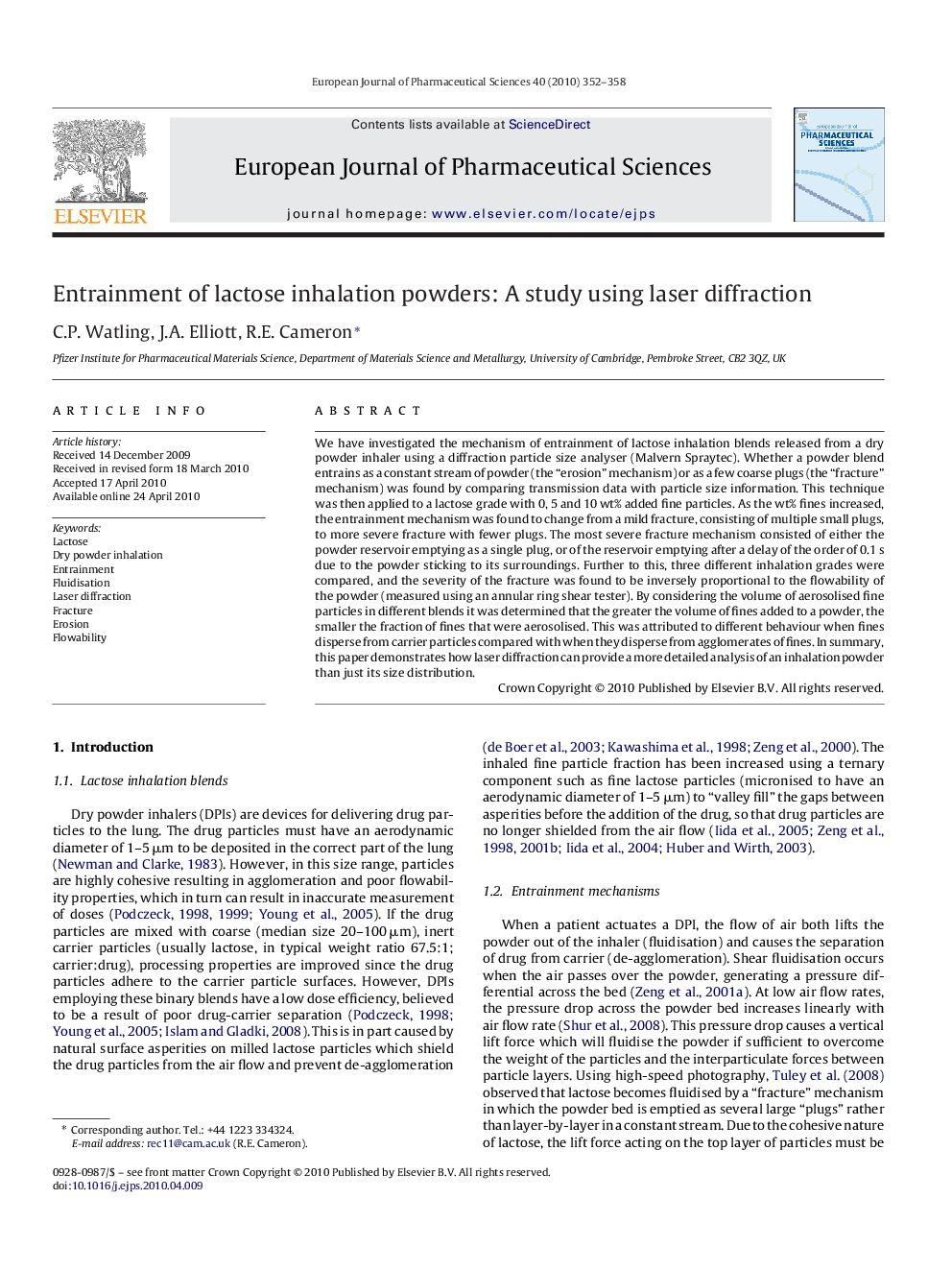| Article ID | Journal | Published Year | Pages | File Type |
|---|---|---|---|---|
| 2481601 | European Journal of Pharmaceutical Sciences | 2010 | 7 Pages |
We have investigated the mechanism of entrainment of lactose inhalation blends released from a dry powder inhaler using a diffraction particle size analyser (Malvern Spraytec). Whether a powder blend entrains as a constant stream of powder (the “erosion” mechanism) or as a few coarse plugs (the “fracture” mechanism) was found by comparing transmission data with particle size information. This technique was then applied to a lactose grade with 0, 5 and 10 wt% added fine particles. As the wt% fines increased, the entrainment mechanism was found to change from a mild fracture, consisting of multiple small plugs, to more severe fracture with fewer plugs. The most severe fracture mechanism consisted of either the powder reservoir emptying as a single plug, or of the reservoir emptying after a delay of the order of 0.1 s due to the powder sticking to its surroundings. Further to this, three different inhalation grades were compared, and the severity of the fracture was found to be inversely proportional to the flowability of the powder (measured using an annular ring shear tester). By considering the volume of aerosolised fine particles in different blends it was determined that the greater the volume of fines added to a powder, the smaller the fraction of fines that were aerosolised. This was attributed to different behaviour when fines disperse from carrier particles compared with when they disperse from agglomerates of fines. In summary, this paper demonstrates how laser diffraction can provide a more detailed analysis of an inhalation powder than just its size distribution.
